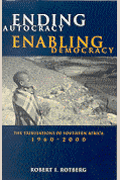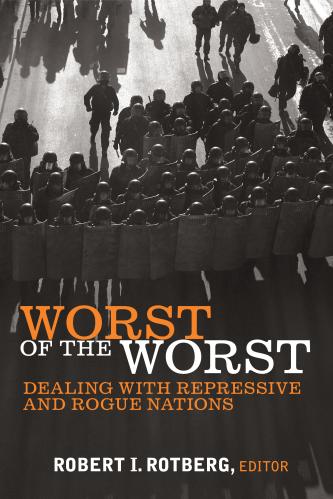Former Congressman Sam Farr (D-Calif.) is credited with having stated that the Peace Corps is “the American taxpayer’s best bang for its buck.” Certainly, it’s a sentiment shared by many returned Peace Corps volunteers who describe their experiences as personally transformative.
However, at approximately $56,500 per volunteer per year, the Peace Corps is one of the most expensive civilian overseas programs funded by the federal government and nearly twice as expensive as the Fulbright U.S. Student Program. The program’s cost ($410 million annually) coupled with its inconsistent development track record and the agency’s insistence that it operate independently from U.S. foreign policy should raise questions for Congress about whether an entirely taxpayer-funded model is sustainable and a good use of limited resources.
In 1971, Brent Ashabranner, the former Deputy Director of the Peace Corps suggested that the agency could be run by a private foundation. Some have dismissed the idea of a mixed funding model stating that there isn’t enough philanthropic money available to offset cuts to federal funding sources. But the Peace Corps already does engage in some philanthropic fundraising through its “strategic partners” program. In FY 2016, Peace Corps raised more than $1.6 million (only counting donations larger than $50,000) in corporate donations, $1.4 million from the private sector for the “Let Girls Learn” initiative, and more than $16,000 through its “Peace Corps Fund.”
Today there are approximately 220,000 members of the National Peace Corps Association, a network for returned Peace Corps volunteers, who could serve as a potential donor base. Included in that number are Reed Hastings (founder and CEO of Netflix), Chris Matthews (MSNBC), author Paul Theroux, and numerous former ambassadors and elected officials fully capable of opening their rolodexes and wallets. A reduction in the federal funding levels over multiple fiscal years would allow the agency to build out its philanthropic fundraising capacity and minimize any program disruptions.
The Peace Corps has three goals:
- To help the people of interested countries in meeting their need for skilled individuals,
- To promote a better understanding of Americans on the part of the peoples served, and
- To promote a better understanding of other peoples on the part of Americans.
The testimonials of retuned Peace Corps volunteers clearly demonstrate that the second and third goals of the program are being met (perhaps exceeded). But what about the first? The vast majority of Peace Corps volunteers have no international development experience to speak of and there are serious questions about whether host countries sustain the projects they initiate.
According to former Peace Corps volunteer and agency historian Stanley Meisler, “Volunteers simply feel and know that what they are doing helps the people around them.” Unfortunately, Congress has not held the Peace Corps accountable to its development mission, allowing the agency to operate in a non-competitive environment and implement programs independently of what other development organizations might also be doing in the same country or with the same goals and objectives.
In addition, the Peace Corps has always pushed back against the notion that it is an instrument of U.S. foreign policy. Former Peace Corps’ Director Aaron Williams said that linking the Peace Corps “with American foreign policy, no matter how benign, may hurt its credibility around the world,” echoing former Secretary of State Dean Rusk’s 1961 statement that “the Peace Corps is not an instrument of foreign policy because to make it so would rob it of its contribution to foreign policy.”
Defenders of the status quo are quick to point out that the length of their deployments makes the program unique—but that is changing. According to Current Population Survey data from 2014, Peace Corps volunteers make up only slightly more than 10 percent of the total number of U.S. citizens engaged in international volunteer programs lasting longer than 26 weeks. Other programs could achieve the same goals and benefit a larger number of American volunteers and foreign citizens, at much less cost to the federal government.
In FY 2018, the president proposed a 32 percent cut to the overall International Affairs Budget but only a 3 percent cut to Peace Corps, reducing the budget to $398 million. However, a strong lobbying effort by the Peace Corps (#ProtectPeaceCorps) and supporters in Congress rolled back even that small cut. But high levels of appropriated funding in the future cannot be assumed.
The Peace Corps ignored President Trump’s Executive Order 13781 requiring that each agency submit a “plan to reorganize the agency, if appropriate, in order to improve the efficiency, effectiveness, and accountability of that agency,” and to consider “whether some or all of the functions of an agency, a component, or a program are appropriate for the Federal Government or would be better left to State or local governments or to the private sector through free enterprise.”
A mixed-funding model could be a benefit to both the Peace Corps and the American taxpayer, reducing direct government appropriations to the satisfaction of fiscal conservatives in Congress and the White House while insulating the agency from future operating budget contractions. A successful philanthropic effort could even allow the agency to reach its long-time aspiration of 10,000 volunteers.
Unfortunately, the Peace Corps prefers the status quo, confident in its Congressional allies and the clout of its alumni. But soon policymakers are likely to ask whether a public-private funding model is a more appropriate arrangement for a comparatively costly volunteer organization intent on distancing itself from U.S. foreign policy and designed to benefit the volunteer first and foremost.
The Brookings Institution is committed to quality, independence, and impact.
We are supported by a diverse array of funders. In line with our values and policies, each Brookings publication represents the sole views of its author(s).









Commentary
The Peace Corps: A lot of bucks for very little bang?
October 16, 2017